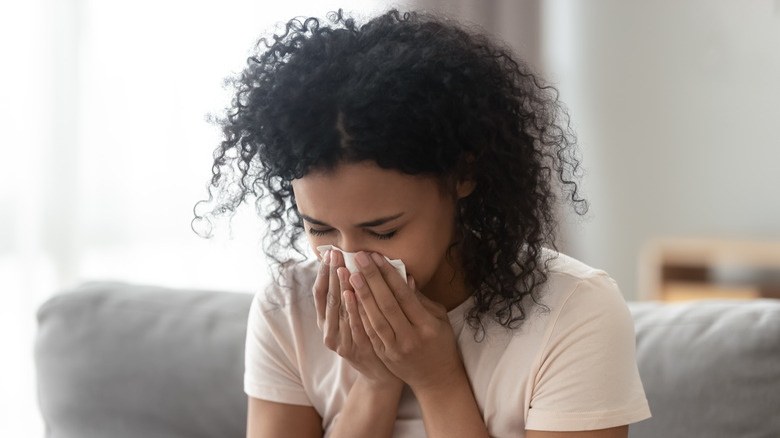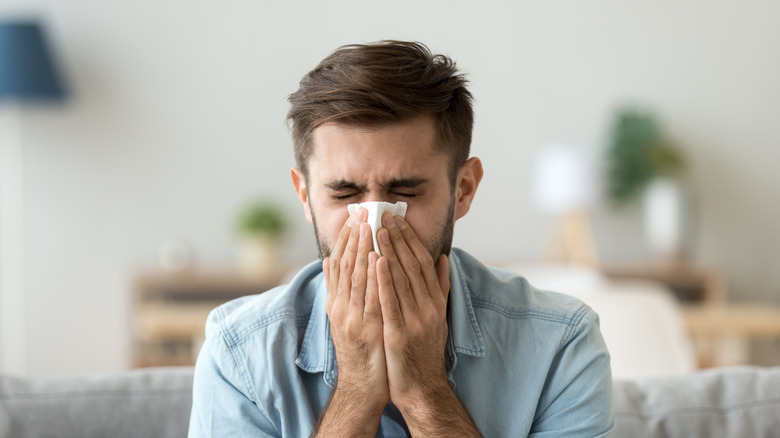How To Tell The Difference Between Spring Allergies And COVID-19
As the saying goes, April showers bring May flowers. Although that timing isn't necessarily an exact science, seasonal allergies do typically flare up in the spring. Those spring allergy attacks that ensue may seem too close for comfort for COVID-19 vaccine side effects — or even the virus itself.
Here are some easy ways to determine if your "allergies" are really allergies and not related to the COVID-19 vaccine or virus.
Some side effects of the COVID-19 vaccine are chills, fatigue, fever, headache, muscle pain, and nausea, according to the Centers for Disease Control and Prevention. Additional symptoms of the COVID-19 virus itself are congestion, diarrhea, a new loss of taste or smell, runny nose, or a sore throat (via Healthline).
Allergy symptoms share some similar symptoms as the COVID-19 vaccine and virus, including a cough, fatigue, headache, sore throat, shortness of breath, difficulty breathing, congestion, or runny nose, according to Nebraska Medicine. However, the most common symptoms for seasonal allergies are sneezing, itchy or watery eyes, congestion or runny nose, facial pressure (but no headache), and no shortness of breath or fever.
When your allergy symptoms may be COVID-19 related
The timing can also be key for knowing if your symptoms are related to your COVID-19 vaccine or not. The COVID-19 virus has an incubation period of 14 days, with most side effects of the vaccine resolving themselves within three to four days (via Healthline).
As for timing with allergy symptoms, they usually occur within 48 hours of being exposed to the allergen (via Nebraska Medicine). Depending on the climate where you live, heightened allergy symptoms can start in late March and continue through October.
If you have been treating your allergy symptoms with over-the-counter antihistamines, nasal sprays, eye drops or allergy prescriptions and your symptoms have worsened in three or four days, it may be best to check with a medical professional to get tested for COVID-19. This is an especially important step if you have developed new flu-like symptoms or have been exposed to someone with COVID-19.


